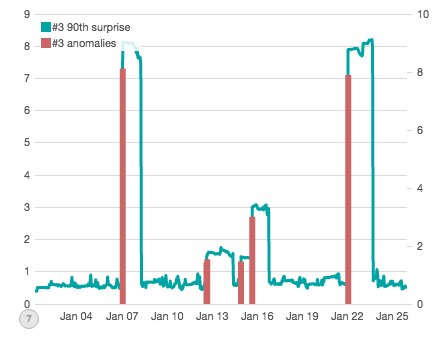

An alternative account of functional segregation is provided by the causal hypothesis, which proposes that functions interact during the establishment of their hemispheric dominance, for example, because the lateralization of one process forces another process to the opposite hemisphere ( 28, 29), or because homotopic brain regions mutually inhibit each other via the corpus callosum ( 30). Moreover, while these functions usually lateralize to opposite hemispheres, in some participants they instead crowd in the same hemisphere with no apparent behavioral consequences. This hypothesis is supported by a host of studies reporting absence of an association between the direction of hemispheric dominance for language and spatial processes ( 21, 23– 27). According to the statistical hypothesis, the lateralization of different functions does not influence the other functions, and instead each follows its own directional bias ( 22). Two views in the current literature offer diverging answers to this question.

Statistical anomaly full#
A crucial question that then arises is whether atypical lateralization of one function flags a full reversal of the typical hemispheric functional segregation pattern. Hemispheric functional segregation is often presumed to confer selective advantage ( 12), which is most commonly explained in terms of increasing neural efficiency, for example, by avoiding redundancy, enhancing the brain’s parallel processing capacity, and preventing conflicts between duplicate control systems ( 13).įrom the fact that cognitive functions have directional population-level biases, it follows that hemispheric functional segregation would also exhibit a prototypical directional asymmetry, with most humans displaying a pattern in which language and praxis are dominant in the left hemisphere and spatial attention, prosody, and face recognition are dominant in the right hemisphere.

What is clear is that functional asymmetry implies a functional segregation within the brain, as some functions wind up dominant in one hemisphere, while dominance for others is established in the opposite hemisphere ( 2). However, it still has not been clarified exactly how the brain came to be lateralized and the extent to which the origins of neurobehavioral asymmetry are similar across species ( 3, 10, 11). The presence of behavioral and brain asymmetries in a wide range of vertebrate and even invertebrate animals ( 4– 7) suggests that lateralization occurred early in evolutionary history ( 8, 9). Equally enigmatic is their phylogenetic evolution. For instance, while it is known that hemisphere asymmetries arise early in human ontogenesis and likely result from complex interactions between genetic and nongenetic factors, its exact developmental determinants remain to be elucidated ( 3). Many cognitive functions rely more crucially on one hemisphere compared with the other, an instance of neural specialization known as “hemispheric dominance” or “functional lateralization.” Even though it is among the oldest findings in cognitive neuroscience ( 1), many questions regarding this fundamental property of brain organization remain to be answered ( 2). Participants deviating by more than one function from the standard segregation pattern showed poorer cognitive performance, in line with an oft-presumed biological advantage of hemispheric functional segregation. Similarly, the vast majority of right language dominant participants demonstrated a completely mirrored brain organization (50%) or a reversal for all but one cognitive function (32%). Our results revealed that most participants with left language dominance display the prototypical pattern of functional hemispheric segregation (44%) or deviate from this pattern in only one function (35%). Crucially, we recruited a sample of left-handers preselected for atypical (right) language dominance ( n = 24), which allowed us to characterize hemispheric asymmetry of the other functions and compare their functional segregation pattern with that of left-handers showing typical language dominance ( n = 39). In this study, we used fMRI to determine laterality for all five functions in each participant. Humans demonstrate a prototypical hemispheric functional segregation pattern, with language and praxis lateralizing to the left hemisphere and spatial attention, face recognition, and emotional prosody to the right hemisphere.


 0 kommentar(er)
0 kommentar(er)
